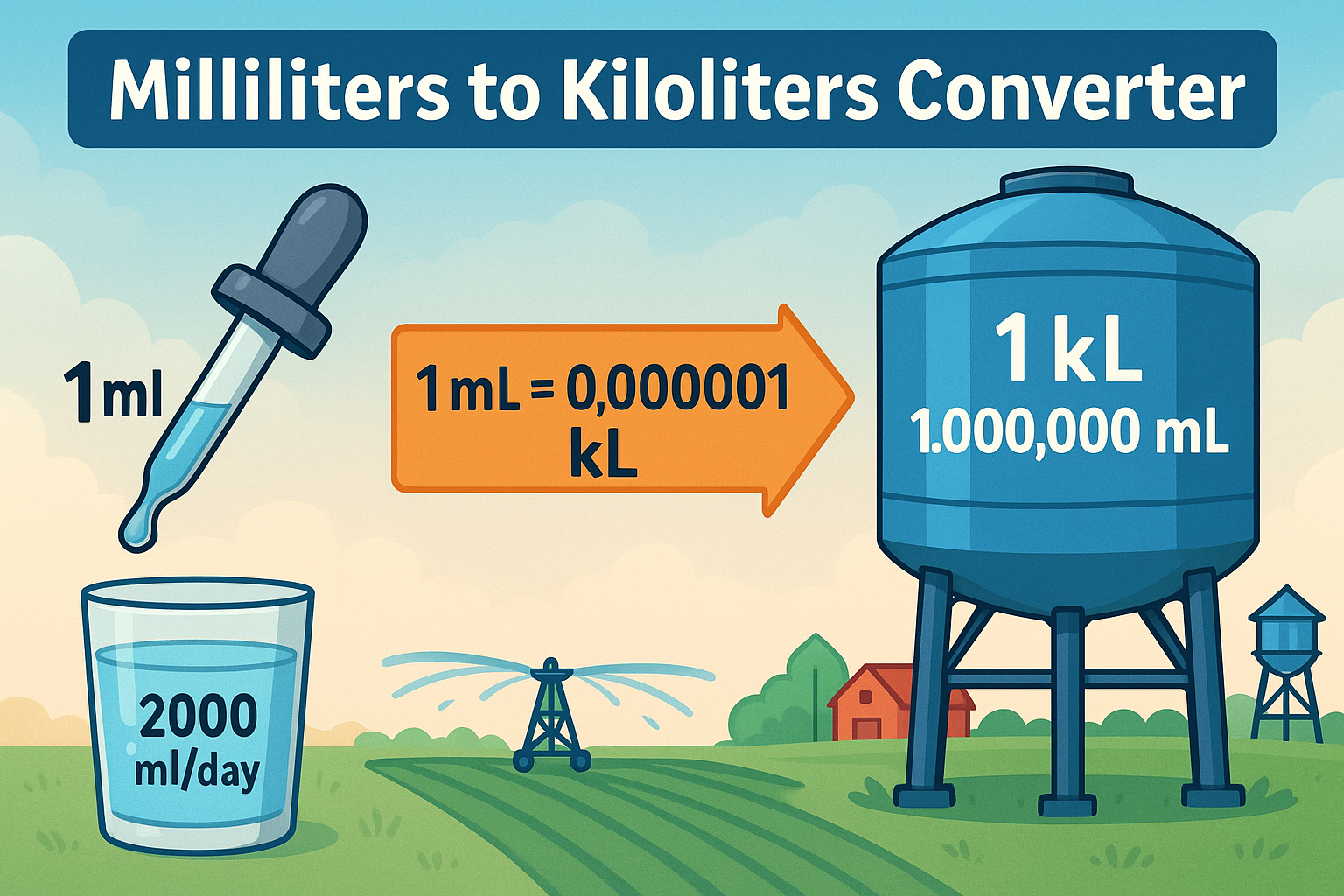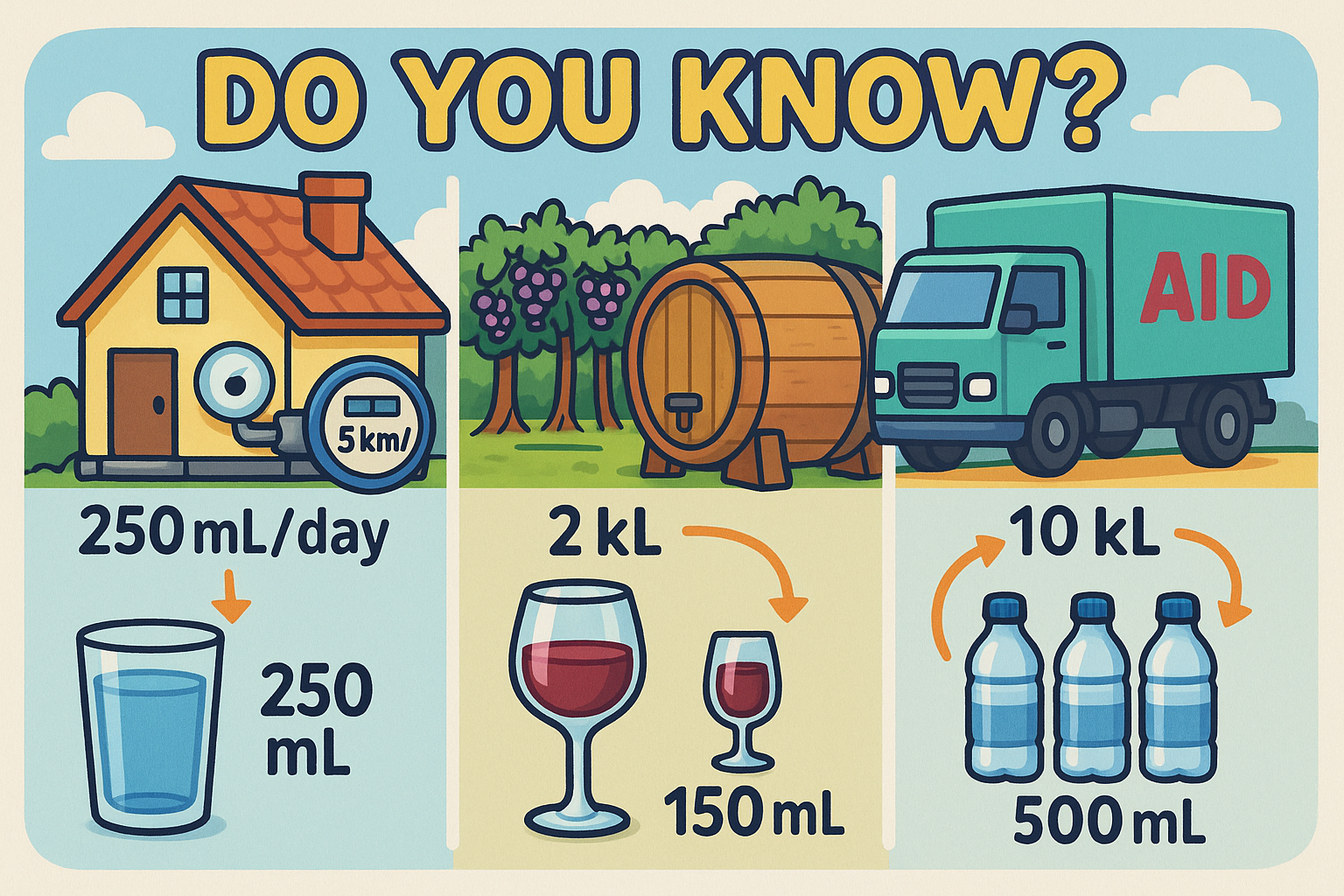milliliter to kiloliter – How to convert mL to kL
The conversion from milliliters to kiloliters shows the full flexibility of the metric system. Milliliters capture tiny amounts, like teaspoons of medicine, while kiloliters measure bulk storage, water supply, or agricultural irrigation. This conversion stretches across six orders of magnitude, linking small details to massive scales.
What is a milliliter (mL)?
A milliliter equals 1⁄1000 L. It is the most common unit for small liquid amounts, used in syringes, recipes, and laboratory science. A teaspoon holds about 5 mL.
What is a kiloliter (kL)?
A kiloliter equals 1000 liters. It is used in bulk measurements such as municipal water supply, wine production, and large-scale storage. For instance, a family water tank might hold 2 kL = 2000 L.
Conversion formula – milliliter to kiloliter
The scale difference is large, but the math is straightforward.
The base equivalence is:1 mL = 0.000001 kL
To convert milliliters to kiloliters:1 milliliter = kiloliter × 0.000001
Examples:
500,000 mL = 0.5 kL
If you often need conversions between small and large units, Jetcalculator’s Volume Converter and its full suite of Conversion Tools make the process quick and reliable.

Do you know?
-
In water supply: A single household may consume several kiloliters of water per month, but daily drinking amounts are tracked in milliliters.
-
In winemaking: Vineyards record harvests in kL, yet consumers pour their glasses in mL.
-
In disaster relief: Aid shipments are calculated in kL, but bottles distributed to families are measured in mL.

From glasses to reservoirs
This conversion is easy to spot in water usage. A person might drink 2000 mL of water daily — that’s 0.002 kL. Multiply that by an entire community, and the same water utility will report demand in kiloliters.
The same scaling happens in agriculture. Irrigation systems deliver kiloliters per field, while plant scientists study water needs in milliliters per seedling. Both sides of the equation describe the same system, just at different scales.
One system across extremes
The formula 1 mL = 0.000001 kL proves how the metric system can handle extremes with ease. Milliliters help with drops of medicine or recipes, while kiloliters scale up to cover farms, factories, and cities.
By converting between them, the same framework supports both the smallest human need and the largest community supply — one system uniting the extremes of volume measurement.

